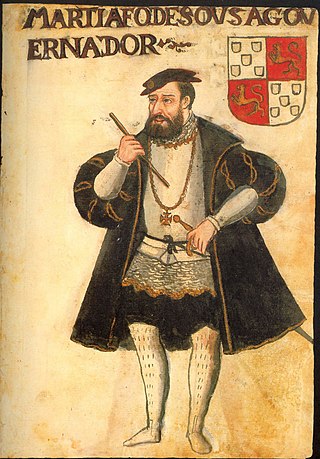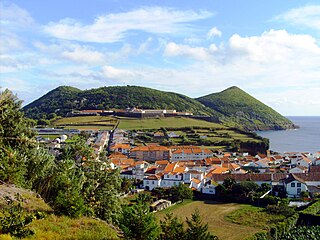Biography
During the Second Siege of Diu, in 1546, the captain Isabel Madeira, together with Isabel Fernandes, Garcia Rodrigues, Catarina Lopes and Isabel Dias, commanded a battalion of female combatants, including D.João de Mascarenhas, commander of the fortress of Diu, due to the fact that the garrison was small and had already suffered casualties. She also oversaw the repair of the bulwarks destroyed by the enemy artillery and helped her husband, a surgeon, to treat the sick. It is said that she went to bury her husband, killed in an attack on the Bastion of St. George, and then returned to the battlefield.
This achievement is recorded in the Decades of Diogo de Couto, and in a magazine of 1842 it was described as follows:
From the first siege of Diu, let us move on to the second. This one, who was worthy of his person, the famous and enlightened Captain D. João Mascarenhas, in the time of the distinguished D. João de Castro, one of the greatest men, who with great credit and equal glory of Portugal, ruled the States of India) was certainly by the circumstances that came together much more formidable than the first. For this reason a great company of women was formed, so that united one and another effort, masculine and feminine, could more strongly resist the fury of the enemies. Among them were the names of Garcia Rodrigues, Isabel Dias, Catharina Lopes, and Isabel Fernandes, all of whom ruled as Captain Isabel Madeira. These, in such a way, will be in this memorable siege, that not only according to the repairs of the walls and bastions, but that, aiding the same Soldiers, to them it is due not to be surrendered that Fortress.

D. Pedro Mascarenhas was a Portuguese explorer and colonial administrator. He was the first European to discover the island of Diego Garcia in the Indian Ocean in 1512. He also encountered the Indian Ocean island of Mauritius in 1512, although he may not have been the first Portuguese explorer to do so; earlier expeditions by Diogo Dias and Afonso de Albuquerque along with Diogo Fernandes Pereira may have encountered the islands. In 1528 explorer Diogo Rodrigues named the islands of Réunion, Mauritius, and Rodrigues the Mascarene Islands, after the name of Mascarenhas.

Martim Afonso de Sousa was a Portuguese fidalgo, explorer and colonial administrator.

João Gonçalves Zarco was a Portuguese explorer who established settlements and recognition of the Madeira Islands, and was appointed first captain of Funchal by Henry the Navigator.
Dom Diogo Rodrigues, Dom Diogo Roiz was a Portuguese explorer of the Indian Ocean who sailed as an ordinary helmsman under the command of Dom Pedro Mascarenhas around Goa. They sailed from the Cape of Good Hope eastward into little-known waters of the newly discovered route to Goa. Rodrigues island was named after him between 4 and 9 February 1528 because he had discovered it during his only return journey from Goa via Cochin to Lisbon, where he was elevated to the rank of a knight (cavaleiro) by John III of Portugal. He then returned to Goa and made a mark in the history of the Portuguese empire in the subcontinent around the mid-16th century.

The First Battle of Guararapes took place during the Insurrection of Pernambuco, between Dutch and Portuguese forces in Pernambuco, in a dispute for the dominion of that part of the Portuguese colony of Brazil.

Diu, also known as Diu Town, is a medieval fortified town in Diu district in the union territory of Dadra and Nagar Haveli and Daman and Diu, India. Diu district is the tenth least populated district of India. The town of Diu lies at the eastern end of Diu Island and is known for its fortress and old Portuguese cathedral. It is a fishing town.

Leonor Teles was queen consort of Portugal by marriage to King Ferdinand I, and regent of Portugal during the minority of her daughter in 1383-1384. She was one of the protagonists, along with her brothers and her daughter Beatrice, of the events that led to the succession crisis of 1383–1385, which culminated in the defeat of her son-in-law King John I of Castile and his armies in the Battle of Aljubarrota. Called "the Treacherous" by her subjects, who execrated her on account of her adultery and treason to her native country, she was dubbed by the historian Alexandre Herculano as "the Portuguese Lucrezia Borgia".

The Fortress of São João Baptista, also known as the Fort of São Filipe or Fort of Monte Brasil is a historic fortress and defensive emplacement, located in the civil parish of Sé, municipality of Angra do Heroísmo in the Portuguese island of Terceira, archipelago of the Azores.
The Camões family were descendants of the 14th-century Portuguese nobleman Vasco Pires de Camões.

Portuguese maritime exploration resulted in the numerous territories and maritime routes recorded by the Portuguese as a result of their intensive maritime journeys during the 15th and 16th centuries. Portuguese sailors were at the vanguard of European exploration, chronicling and mapping the coasts of Africa and Asia, then known as the East Indies, and Canada and Brazil, in what came to be known as the Age of Discovery.

The Diu Fortress is a Portuguese-built fortification located on the west coast of India in Diu. The fortress was built as part of Portuguese India's defensive fortifications at the eastern tip of the island of Diu during the 16th century. The fortress, which borders on the town of Diu, was built in 1535 subsequent to a defense alliance forged by Bahadur Shah, the Sultan of Gujarat and the Portuguese when Humayun, the Mughal Emperor attempted to annex this territory. It was strengthened over the years, till 1546. The Portuguese ruled over this territory from 1537 until the Indian invasion of December 1961. Today it is a landmark of Diu and one of the Seven Wonders of Portuguese Origin in the World.

The siege of Diu occurred when an army of the Sultanate of Gujarat under Khadjar Safar, aided by forces of the Ottoman Empire, attempted to capture the city of Diu in 1538, then held by the Portuguese. The Portuguese successfully resisted the four months long siege. It is part of the Ottoman-Portuguese war.

The Portuguese conquest of Goa occurred when the governor Afonso de Albuquerque captured the city in 1510 from the Adil Shahis. Old Goa became the capital of the Portuguese India which included territories such as Fort Manuel of Cochin, Bom Bahia, Damaon & Chaul. It was not among the places Albuquerque was supposed to conquer. He did so after he was offered the support and guidance of Timoji and his troops.

The third siege of Diu was a siege of the Portuguese Indian city of Diu by the Gujarat Sultanate in 1546. It ended with a major Portuguese victory.

Garcia de Sá was a Portuguese nobleman, soldier, explorer, fidalgo of the Royal Household, who was the 14th ruler of Portuguese India as governor from June 1548 to 13 of June 1549.

Khoja Zufar or Coje Çafar, also called Coge Sofar, or Safar Aga in Portuguese, Cosa Zaffar in Italian, and Khwaja Safar Salmani in Turkish or Khuádja Tzaffar in Arabic, was a soldier and local ruler in Western India during the 16th century. He was a leader in the failed Siege of Diu. Zufar was an experienced merchant with the distant markets of the Arabian Gulf around the Strait of Mecca and Lepanto at the Mediterranean.

Catarina Lopes (16th-century) was a Portuguese soldier, she fought alongside other men and women soldiers in the Siege of Diu. She is known for forming a group of combatants to fight for Portuguese Empire against Sultanate of Gujarat and Ottoman Empire.

Portuguese Asilah covers the period of Portuguese rule over Asilah, today a city in Morocco. The territory was ruled by the Kingdom of Portugal from 1471 to 1550 and again between 1577 and 1589.















